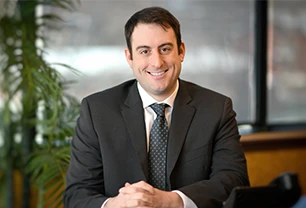Defining “Disability”
Proving that you are disabled requires more than simply telling the Social Security Administration (SSA) that you suffered an injury and can no longer work. Rather, the SSA must decide that you are disabled, and the administration utilizes a very specific definition of “disability” for the purposes of awarding government benefits. Contact our Ronkonkoma SSDI lawyers today for help with proving your entitlement to benefits.
Generally, the SSA considers a person disabled when:
- The disability is total (i.e., no benefits for partial or short-term disabilities),
- The person cannot perform the work they did before,
- The person cannot adjust to a different line of work due to their medical condition, and
- The disability has lasted or is expected to last at least one year or to result in death.
Deciding Whether You are Disabled
When the SSA is determining whether a person meets the above criteria, they look to several factors, which are:
- Are you working? Individuals working and earning more than $1,220 a month will not be considered disabled.
- Is your condition severe? A “severe” condition is one that limits your ability to do basic tasks such as lifting, standing, walking, sitting, and remembering.
- Is your condition on the list of disabling conditions? The SSA maintains a list of medical conditions that it considers to be severe enough to prevent an individual from working (see below). If your condition is not on this list, the SSA must then determine that it is at least as severe as a listed condition.
- Can you do the work you did previously? If you are able to perform the work you did previously, the SSA will not consider you disabled. If you cannot, the agency will move to the next factor.
- Can you do any other type of work? The SSA will then determine whether, based on your medical condition, age, education, past experiences, and transferable skills, you are able to do other work than what you did previously. If not, the SSA will consider you disabled.
Types of Disabilities Covered
Some of the most common conditions the SSA includes in its list of qualifying disorders include:
- Musculoskeletal system (amputation, spinal disorders, burns, etc.)
- Special senses and speech (blindness, loss of speech, hearing loss, etc.)
- Respiratory disorders (asthma, chronic pulmonary hypertension, respiratory failure, etc.)
- Cardiovascular system (chronic heart failure, recurrent arrhythmias, heart transplant, etc.)
- Digestive system (chronic liver disease, inflammatory bowel disease, gastrointestinal hemorrhaging, etc.)
- Genitourinary disorders (chronic kidney disease, kidney transplant, nephrotic syndrome, etc.)
- Hematological Disorders (bone marrow disorders, hemolytic anemias, disorders of thrombosis and hemostasis, etc.)
- Skin disorders (ichthyosis, dermatitis, bullous disease, etc.)
- Endocrine disorders (pituitary gland disorders, thyroid gland disorders, adrenal gland disorders, etc.)
- Congenital disorders that affect multiple body systems (non-mosaic Down syndrome)
- Neurological Disorders (epilepsy, cerebral palsy, multiple sclerosis, etc.)
- Mental disorders (schizophrenia, bipolar disorder, anxiety and obsessive-compulsive disorders, etc.)
- Cancer (breast cancer, leukemia, prostate cancer, etc.)
- Immune system disorders (lupus, inflammatory arthritis, HIV infection, etc.)
Contact the Ronkonkoma SSDI Lawyers at Turley Redmond & Rosasco
If you suffer from any of the above medical conditions and are no longer able to engage in gainful employment, you may want to consider applying for SSDI benefits. To get started, contact the Ronkonkoma SSDI lawyers at Turley Redmond & Rosasco by using our online form or by calling us at 631-582-3700.
3075 Veterans Memorial Highway,
Suite 200
Ronkonkoma, NY, 11779
Phone: 631-582-3700
Map and Directions












